Choosing a milk for toddlers can be such a challenge! So if you worry that your toddler isn’t drinking enough milk, is drinking too much milk, or is maybe not drinking the “right” kind of milk, this will help.
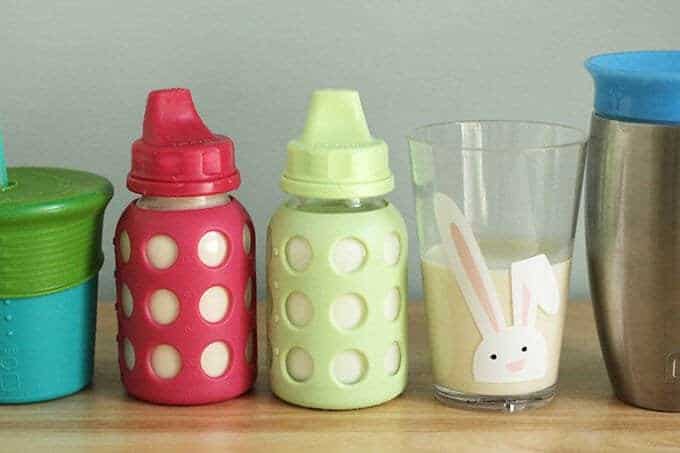
Milk for Toddlers
I’m going to cover grass-fed milk, dairy milk, the most popular nondairy milks, newer pea protein milks, and important facts to help you know which milk is the best milk for toddlers. Plus, how to know just how much milk your toddler really needs—and signs that they might be drinking too much.
Your toddler won’t eat? Help is here!
Sign up for our email updates to get tips and ideas sent to your inbox.
What’s the Best Milk for Toddlers?
- The American Academy of Pediatrics (AAP) recommends that toddlers drink whole dairy milk since they need the fat for proper development of their brains and nervous systems.
- After a child turns one, they are better able to digest cow’s milk—which is why cow’s milk is not recommended for babies until their first birthday.
- A study published in 2016 found that full fat dairy including milk, cheese, and yogurt was protective against type 2 diabetes—meaning that it helped to lower risks of developing the disease.
How Much Milk Should My Toddler Drink?
The AAP recommends that toddlers consume 2-3 servings of milk or other dairy products a day. A toddler serving is ½ cup or 4 ounces. As your toddler grows, that serving size may increase to closer to 1 cup. Check the size of the sippy cup or open cup you use for milk—you may be serving more than you realize since some cups are more like 9-12 ounces.
Best Milk for 1 Year Old Babies and Toddlers
Here are a few factors to consider when deciding which milk to transition your baby to when they turn one and are a toddler.
- WHOLE MILK
This is the type of milk the AAP recommends that toddlers drink after they turn one. The brand or type doesn’t matter as much as opting for whole milk.
- GRASS-FED DAIRY
This type of milk may have higher levels of Omega 3 fatty acids due to the green grass they eat, which may be beneficial to heart health. That said, they are often price prohibitive at 2-3 times the cost of other dairy milks and are not always widely available outside of major metro areas. - ORGANIC MILK
According to the UDSA guidelines: “The USDA organic seal verifies that producers met animal health and welfare standards, did not use antibiotics or growth hormones, used 100% organic feed, and provided animals with access to the outdoors.” The most wildly available milk brands for toddlers include Organic Valley, Horizon, and Stonyfield. Store brands often have competitive prices, so check to see what’s available near you if buying organic is important to you. - LOCAL MILK
Milk made in your area can also be a wonderful option for toddlers, especially since it’s a chance to support local growers.
Cups shown: Lifefactory, Silikids, Munchkin 360 Miracle Cup
Should My Toddler Have Vat Pasteurized Milk?
You may see the label ”vat pasteurized” to reflect that a milk was heated in small batches at a lower temperature for a longer amount of time—and the milk may come with a layer of cream on top that need to be shaken back into the milk. Many find the flavor of this type of milk from a flavor standpoint since it tastes more like fresh, raw milk—but it’s safer than actual raw milk from a food safety perspective. These milks often have shorter shelf lives than ultra-pasteurized milk, so be sure to check the label.
Should My Toddler Have Fairlife Milk?
Fairlife, a brand owned by Coca-Cola, is filtered to have more protein and less sugar. Toddlers don’t need extra protein (or to cut carbs) so I wouldn’t go this route unless recommended for a specific reason by your pediatrician.
Should My Toddler Drink rbST-free Milk?
This is a slightly complicated topic. The hormone rbST can increase the amount of milk a cow can produce by 15% and also decrease the amount of feed they need (which is a good thing as far as food supply and cost to farmers goes). The FDA hasn’t found any proof that there’s harm to human health from drinking milk from cow’s who’ve been given this hormone, but it’s banned from use in Canada. (It’s also produced by Monsanto if that raises red flags for anyone.)
But most milk containers actually say “milk from cows not treated with rbST” in small type towards the middle or bottom of the front or side of the label. You may want to look for this if you buy conventional milk. Organic milk won’t have it per the USDA regulations and many locally made milks from smaller companies won’t have it either.
Do I need to worry about the sugar in milk?
Sweetened nondairy milks can contain whopping amounts of added sugars. Look for labels that specifically say “unsweetened”. Otherwise, your toddler may get upwards of 15 grams of sugar in a cup (kids under two aren’t supposed to have any added sugars; kids over two are supposed to have 25 grams or less of added sugars). The milk in cow’s milk is naturally present so you don’t need to worry about that.
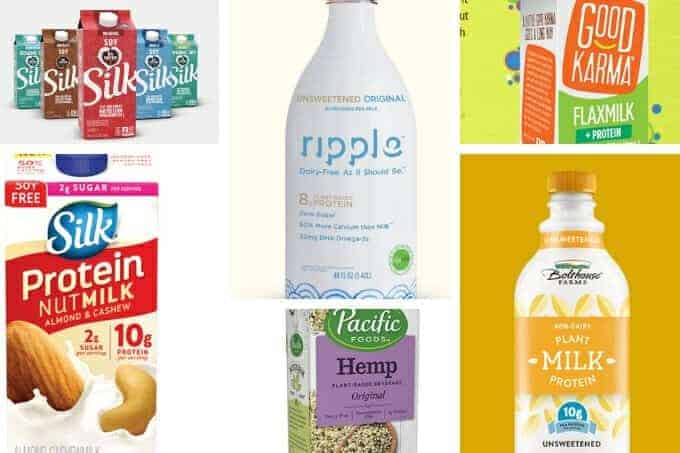
What Non-dairy Milk Substitute is Best for Toddlers?
There are so many plant-based milk options on the market that it can be really hard to know what to buy. Here’s a breakdown of the most widely available and popular ones to help you pick one if your toddler can’t tolerate dairy, or if you just want an option to use in smoothies. And generally speaking, opt for plain, unsweetened nondairy milks to avoid excess added sugars.
- PLANT MILK MADE WITH PEA PROTEIN
Newer plant milks that use pea protein for protein that are excellent milks for toddlers. There’s the Silk Protein Nut Milk, which is very affordable (less than $3 a quart, usually) and has a smooth texture and mild flavor. Ripple Milk, while usually a little more expensive, is incredibly creamy and delicious and is an excellent option for kids with nut-allergies. Bolthouse Farms also has a newer plant milk option made with pea protein. These options have nutritional profiles that more closely mirrors cow’s milk. - FLAX AND HEMP MILK
Unsweetened flax and hemp milk can also be a good choice since they are naturally full of nutrients, as well as beneficial fatty acids. We like the unsweetened plain and vanilla varieties WITH added protein from Good Karma. Or you can try hemp milk, which naturally has both healthy fats and protein. - SOY MILK
Unsweetened soy milk is also similar to cow’s milk in terms of nutrition and can be a good milk for toddlers who don’t have an issue tolerating soy. (I know that there has been some concern about soy consumption over the years, but if used in moderation like all other foods, it can be a good option.)
The vast majority of nondairy milk, including almond, cashew, and rice, contain little nutrition on their own. While most are fortified with calcium and vitamin D, few contain any protein or fat. I think of them like water or as a neutral base for smoothies. They are good for hydration, not much of a source of anything else when comparing to cow’s milk.
Which Milk is Best for Toddlers with Nut Allergies?
From the nondairy milks above, Ripple, Good Karma, Bolthouse Farms, and soy milks are good options for a toddler with a nut allergy. (Rice milk is also usually nut-free, though it doesn’t have much nutritional value.) These are also great options if you need a nut-free nondairy option to send to daycare or preschool. Be sure to double check labels to confirm that the one you choose is nut-free.
What’s the Best Milk for 2 and 3 Year Olds?
The AAP recommends that kids over 2 switch to low fat milk—despite research that that might not be the best idea for long-term health goals. A study published in 2013 by the found that kids who drank 1% milk had higher BMIs than those who drank whole or 2% milk. Many studies have also shown that all of us are fuller after eating higher fat dairy products and therefore may eat less overall.
If you have questions about the type of dairy milk to offer your 2 or 3 year old, bring it up with your pediatrician. (We do whole milk in our house!)
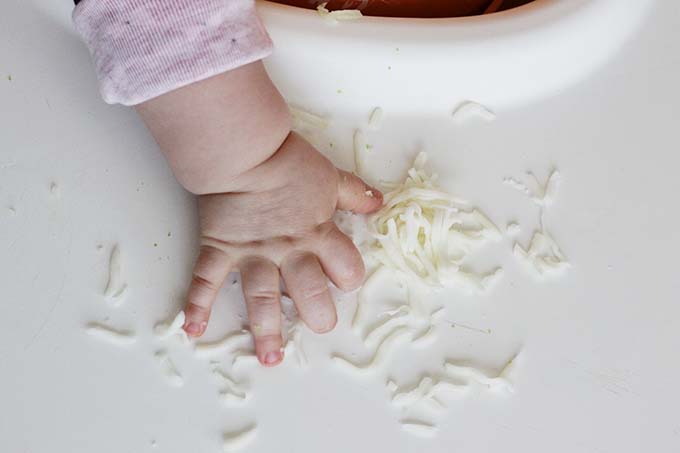 Do kids really need to drink milk?
Do kids really need to drink milk?
Nope! Toddlers can get the nutrients from milk in other dairy like cheese, yogurt, and kefir. The goal should be 2-3 servings of dairy a day, which may (or may not) include milk.
If my toddler doesn’t drink milk, what are good sources of calcium?
If your kiddo doesn’t like dairy or nondairy milk, cheese or yogurt, try to include these foods.
- CALCIUM
For calcium, kale, broccoli, bok choy, almonds/almond butter, canned salmon (with bones, so you need to crush them when mixing into salmon salad or patties), sesame seeds/ tahini, chia seeds, and tofu are good sources. - VITAMIN D
For Vitamin D, salmon, tuna, fortified oj, egg yolk, fortified cereal. (You may need to double check labels on breakfast cereals and fortified juices if you go that route to know what you’re getting.)
Can My Toddler Drink Too Much Milk?
Short answer: YES! Milk is often a reason that a toddler won’t be hungry for a meal. Milk is food after all and it can be very filling. A toddler can down 4-8 ounces of milk really quickly, especially when drinking from a sippy cup…and especially if drinking from a sippy cup and doing other things at the same time (walking, watching a screen, etc).
If your toddler isn’t wanting to eat much food, try cutting down on the amount of milk you offer and how frequently you offer it. A good goal if you suspect this to be impacting how much food your toddler is eating is to offer milk at meals and water in between.
TIP: Read more about how much milk is best for one year olds.
Bottomline on Milk for Toddlers
- Your toddler should eat a range of dairy products to get lots of nutrition (and probiotics from foods like yogurt and aged cheeses) from their foods, not just milk.
- If they eat other dairy or don’t like dairy, it’s okay.
- You might want to consider alternating milk and water at meals and snacks throughout the day to ensure that your little one has space in their belly for food.
- If you go with non-dairy milk, reach for unsweetened versions when possible to limit added sugars.
- You may also like Banana Milk, Vanilla Milk, Strawberry Milk, Chocolate Milk, and my guide to weaning.
- Learn more about Kids Drinks here.
As always, discuss any concerns with your pediatrician. This post is not meant to be a substitute for medical advice.
Related Recipes
I’d love to hear your feedback on this post, so please comment below!
This post was first published on February 22, 2019
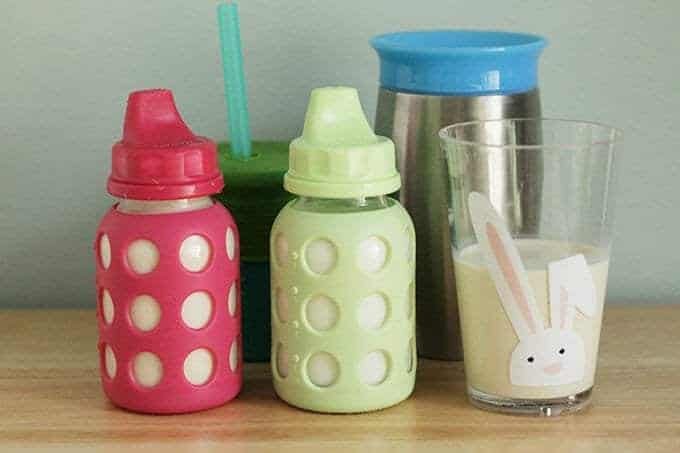
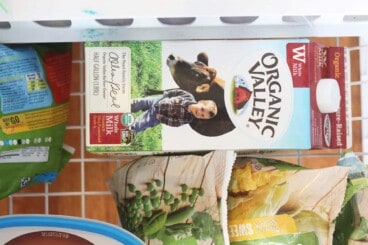

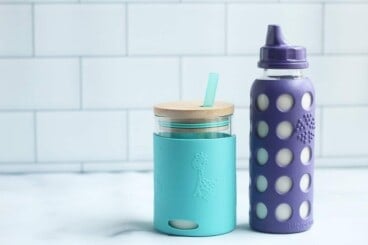
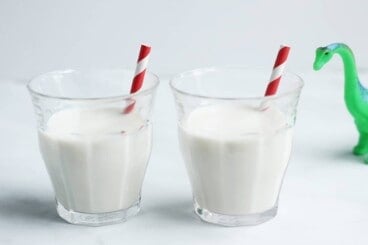
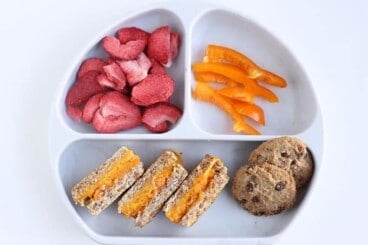
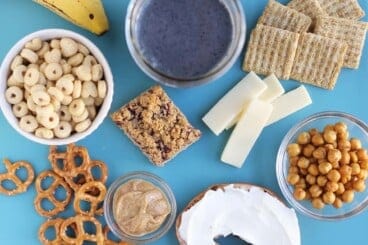
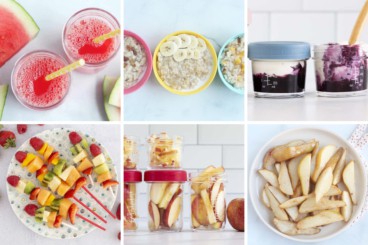
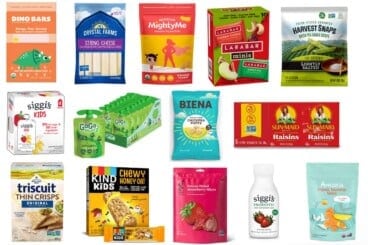
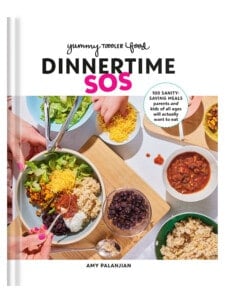
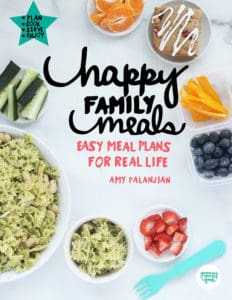
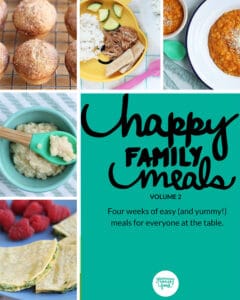
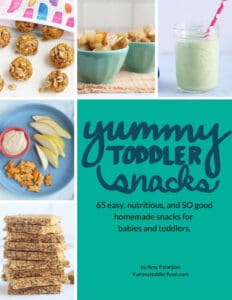









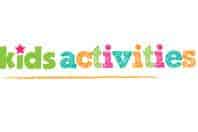

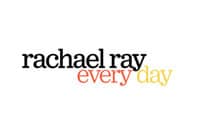
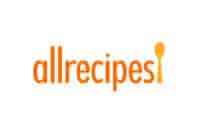

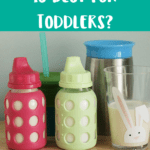
What about A2 milk? Any thoughts on that for toddlers?
I think that it’s likely not necessary (and I can’t say whether their claims about it being easier on digestion would hold up), but if your family likes it, there’s also nothing wrong with it that I can see.
What about Oatly full fat oat milk? Is this a good choice? Thanks!
It has less protein than cow’s milk and some varieties have added sugar, so it can be a fine option in the mix but I’d look for the unsweetened ones if possible if it’s being given a few times a day.
excellent article! I am a pediatrician and this helped familiarize me with some of the new pea protein milks. God bless and thanks for a great article.
I’m so glad! The pea protein milks are a nice option to have for sure!
the best method for toddlers is breastfeeding.
That’s not an option for everyone for a variety of reasons, so there are other options included here.
What’s the best cup you would recommend to drink milk with for a 13m old?
You can find my favorites here: https://www.yummytoddlerfood.com/best-sippy-cups-for-toddlers/
Hi, after reading this awesome paragraph i am too happy to share
my familiarity here with mates.
Admiring the time and energy you put into your blog and in depth information you provide.
It’s good to come across a blog every once in a while that isn’t the same old rehashed information. Fantastic
read! I’ve bookmarked your site and I’m adding your RSS feeds to my Google account.
Just wondering what brand that bottle with the sappy top is in the picture? lol
It’s the Lifefactory 4 ounce bottle with their sippy cap!
What’s up to all, the contents present at this web site are genuinely awesome for people experience,
well, keep up the good work fellows.
Hi every one, here every person is sharing these kinds of knowledge, thus it’s pleasant to read
this website, and I used to pay a visit this weblog every day.
I do not even know the way I finished up here, but I assumed this
publish was once great. I do not realize who you are but certainly
you are going to a well-known blogger in the event you
are not already. Cheers!
Thank you so much for this! I am trying to find a non-dairy milk for my 1yr old with milk allergies. I was going to do almond milk, but I was worried about the fat for brain development. I’m thinking that new silk protein or flax milk. What one do you think is better?
The flax milk is a little more straightforward ingredient wise but both are good options with nice consistency and mellow flavor. (If you get the flax milk, try to find the unsweetened version.) I’d probably alternate to vary nutrients and to make it more affordable overall since the flaxmilk can cost about twice as much depending on where you live.
Hi! What about grass fed milk? Is it better than organic? Thanks!
Milk from grass-fed cows may have higher levels of beneficial fatty acids than corn-fed cows, so if you are looking to add more omega fatty acids to your diet, that can be a good option. If you regularly include other sources (salmon, nuts/seeds, etc), you may not need to spend the extra money. It could be worth looking into a local brand (that’s not necessarily organic) to see what their cows eat since it’s possible you could find a high quality option for less money than what you’d pay for big brand grass-fed milk from the likes of Organic Valley or Stoneyfield.
make sure it says 100% Grass Fed. some say grass fed but the cows are also fed grains. I read that somewhere.
Do you know whether dairy recommendations are different for toddlers who are still breastfeeding? I still nurse my 2.5 year old a few times a day, but of course it’s hard to know how much she takes. She’s not crazy about cow’s milk–drinks it on occasion but definitely not 2-3 servings a day. Hates cheese, will occasionally eat yogurt, does like broccoli and bok choy (I’ll have to start offering almond butter more often, I didn’t realize that was a good source of calcium). Our pediatrician wasn’t worried about it at 2 year check up but didn’t offer specific info so I was just curious if you had any. Thanks!
I would say that if you brought it up with your pediatrician and they weren’t concerned, then you shouldn’t be either. Maybe to cover your bases, keep offering those calcium rich foods to increase the chances that she’ll eat them once she’s weaned? You could also consider a supplement if you’re really concerned—or plan to bring that up the next time you see your dr.
I’m curious about toddler formula, since my kid is so picky, I can’t help but to give her this milk: http://www.dumex.com.sg/products/pages/product-dugro-step-3-growing-up-milk.aspx
I’m not a doctor but my only concern would be if she’s filling up on this and less inclined to eat other foods out of hunger. It’s a tricky balance when you’re worried that they’re eating enough, but perhaps talk it over with your pediatrician if you haven’t already.